

For the relief of certain kinds of pain, I believe, there is no more useful medicine than Cannabis within our reach. Sir John Russell Reynolds 1859
This is the third part of a five-part series on the use of Cannabis in chronic fatigue syndrome (ME/CFS) and fibromyalgia (FM). Amber Ella started the series with a fascinating look at the science suggesting that Cannabis may be able to dampen inflammation, limit mast cell degranulation and reduce pain more. Next in an introduction to using Cannabis, Amber discussed legal issues, the different subspecies available and different modes of administration.
Part III lays the groundwork for Part IV, the treatment blog, by taking by taking a deep dive into the plant and its many potential medicinal properties. Plus, we introduce Health Rising’s Cannabis Review program.
Part V looks at specific strains of the plant and how they may help. Parts 4-6 are taken mainly from three books, as well as articles on the web:
- Leonard Leinow – CBD: A Patient’s Guide to Medicinal Cannabis–Healing without the High
- Michael Moskowitz – Medical Cannabis: A Guide for Patients, Practitioners, and Caregivers
- Michael Backes – Cannabis Pharmacy: The Practical Guide to Medical Marijuana — Revised and Updated
Health Rising’s Marijuana as Medicine for ME/CFS and Fibromyalgia Series
- Pt I: Marijuana as Medicine for ME/CFS and/or Fibromyalgia: The Science Behind Cannabis – Amber Ella
- Pt. II: Getting Started with Cannabis – Amber Ella
- Pt. III: Cannabis – More Than Just THC and CBD – Cort Johnson (This article)
- Pt. IV: The Doctor Speaks: Cannabis Treatment Protocol – Treatment Regimens for pain, sleep, etc. / How to quickly stop a high / What to do when CBD stops working / Finding Safe CBD Oil and more – coming up
- Pt. V: Strain Specific – Picking Your Plants – coming up
Health Rising’s Fibromyalgia and Chronic Fatigue Syndrome Cannabis Review Program
when you get it right
you pass it on… Gary Snyder
This is our first in-house, wholly created-by-us program! Kudos to Stavya, HR’s technical ace, for putting it together. Stavya, a young programmer from New Delhi, has moved forward in leaps and bounds since he began working for Health Rising at its inception. This is the first of three Stavya-produced Health Rising programs we hope to introduce this year.
This unique program allows you to, if you wish to, (you don’t have to), identify other constituents than THC and CBD, found in the Cannabis strains you’ve tried that might be helpful. Please let us know if something goes wrong or if you have any suggestions on how to improve the program in the comments or via the contact form.
Note that all answers are anonymous.
There is absolutely no way to tell who provided what answer.
A Close Connection
Endocannabinoids appear to be profoundly connected with the concept of homeostasis (maintaining physical stability) and help to redress specific imbalances presented by disease or injury. Backes
Cannabis has been used for thousands of years for medicinal (and other) purposes but it was not until 1992 that Dr. Raphael Mechoulam (the discoverer of THC) discovered the reason why. We have a close chemical connection to it: the endocannabinoids our bodies produce are very similar to the phytocannabinoids found in hemp and Cannabis.
As explained by Dr Michael Moskowitz in “CBD: A Patient’s Guide to Medicinal Cannabis–Healing without the High”, the endocannabinoid system has two main purposes – to produce feelings of pleasure, energy and well-being and to nudge the body back to health after injury or disease. (Moskowitz, a pain doctor, was also featured in Norman Doidge’s book, “How the Brain Heals Itself”, and in a recent blog on Moskowitz’s use of neuroplasticity exercises to reduce pain.)
Cannabis’s ability to produce states of bliss and enjoyment are, of course, well-known – both to the public and to researchers. Its first signaling molecule (the molecule which locks onto the endocannabinoid receptors on our cells and triggers them to react) was called anandamide after the Sanskrit word meaning bliss (ananda).

Cannabis was so associated with altered mental states that its signaling molecule was named after the Sanskrit word for bliss.
For a long time, Cannabis was thought of only in terms of bliss. It was only a little more than a decade ago that researchers got serious about understanding what Cannabis was doing in the body and to uncover the key elements of the endocannabinoid signaling system – its two receptors, the two signaling molecules that lock onto them, and the five enzymes responsible for regulating the process. Since then much has been learned – and much more remains to be learned about this unusual system.
Unlike some other systems in the body, the endocannabinoid system operates only “on demand”. Because endocannabinoids are derivatives of polyunsaturated fatty acids (i.e. fats), they’re not water soluble and don’t move efficiently through the body. Instead, they’re produced on demand from precursor molecules found in localized areas.
When the body goes out of balance or homeostasis, endocannabinoids are produced to pull it back into balance – after which they disappear back into the body.
Focus on the Plant
Cannabis Subspecies
Although the subject has provoked impassioned arguments among botanists, three distinct subspecies of Cannabis are generally believed to exist: Cannabis sativa, C. indica and C. ruderalis. Cannabis has been around humans for a long time. It appears to have originated in the steppes of the Tibetan plateau 20 million years ago and has been present in Europe for at least a million years.
Moskowitz warns against placing too much stock in the below generalizations. While some basis for distinguishing them exists, Moskowitz asserts that the strain is the key – not the subspecies. Since dispensaries and Cannabis users often refer to subspecies, though, they are described below.
Cannabis sativa strains originated and are grown around the equator and tend to produce thinner, less densely leafed-out plants. On the whole, they may be more stimulative and thus may be better used during daytime. While not all C. sativa derived strains have these properties, they are known for their ability to energize, increase focus, enhance creativity, improve mood, relieve headaches and – increase one’s appetite. On the downside, they can produce anxiety, paranoia and induce hyperactivity in some people.
Cannabis indica strains grow in cooler temperatures and in higher altitudes and tend to produce broader, more densely leafed-out plants. In general they tend to be more calming, better at reducing body pain, promoting sleep, reducing seizures and reducing anxiety or stress – and can increase one’s appetite. Negative side effects can include producing feelings of tiredness, sluggishness, overeating and lack of motivation.
The least known Cannabis spp, C. ruderalis was discovered in the 1920’s, growing along roadsides in Russia. It has almost no THC but can have very high levels of cannabinol (CBN).
The Phytocannabinoids
THC and cannabidiol are the two most well studied phytocannabinoids in Cannabis and, are, as far we know, the two most medicinally active parts of the plant. They also make up a very small portion of the plant.
THC – the great pain reliever
THC is responsible for the psychoactive experiences sometimes produced, and is the strongest pain-relieving component of the plant. So long as Cannabis was used primarily for getting high, growers excelled in producing strains with higher and higher levels of THC.
THC, interestingly, is actually not present in the plant itself – its precursor THCA is. Only when heated to 266 F (130 C) does THCA get converted to THC – hence the practice of burning the plant to access its psychoactive aspects.
THC interacts with CB1 receptors in the brain to produce feelings of wellbeing, reduce pain and anxiety and improve mood via its effects on neurotransmitters such as norepinephrine, serotonin and dopamine, GABA, histamine, etc. These CB1 receptors are particularly plentiful in the autonomic nervous system in both the brain and the body and may affect everything from decision-making to memory to movement to temperature. Few CB1 receptors, interestingly, are found in the brainstem – a recent focus of ME/CFS research.
THC, it turns out, is the greater pain reliever – not CBD. Studies indicate that THC relieves pain partially by disconnecting the sensory part of the brain from the emotional part of the brain – making the pain that is present less “hurtful” and anxiety-producing.
THC also appears to work by reducing the neuroinflammation that’s leaving the pain-producing nerves in our central nervous system twitchy and hyper-activated. Moskowitz calls THC a nervous system protectant.
Too much THC in your system, though, can produce anxiety, paranoia and actually increase inflammation. The key to using THC medically is using it judiciously; i.e. getting just enough of it boost your health while not producing negative side effects. Moskowitz asserts that just about everybody who’s ever had a bad Cannabis experience should be able to use the plant – and its THC component safely. THC plays a important role in Moskowitz’s Cannabis protocols.
Cannabidiol (CBD) – the promiscuous molecule
When getting high was the main reason for using Cannabis, pot growers selected for strains with ever higher levels of THC and lower and lower levels of CBD. When lab testing for CBD began in 2009, only about 1/600 Cannabis samples had high CBD levels (>4% or 20:1 CBD/THC or higher). Since Cannabis’s reemergence as a medicine, however, growers have uncovered many more high CBD strains and have steadily been increasing CBD’s availability.
The second most studied phytocannabinoid, CBD doesn’t directly affect the endocannabinoid system at all. Instead, by blocking the enzyme that breaks down anandamide (the signaling molecule which turns on the endocannabinoid system), it essentially turns the endocannabinoid system on.
Like THC, CBD is not present in the raw plant. CBDA, the precursor to CBD, is converted into CBD by heat. The CB2 receptors that cannabidiol or CBD interacts with are less common in the brain but still play important roles in reducing neuroinflammation, regulating serotonin and can help with depression and/or anxiety. CB2 receptors are ubiquitous in the body, particularly immune cells where they tend to downregulate the production of pro-inflammatory cytokines.
CBD also binds to other receptors to counteract the psychoactive effects of THC, turn on serotonin and TRPV1, regulate gene expression, protect the bones, and fight cancer. Moskowitz believes CBD-rich strains can be helpful with many neurodegenerative diseases.
In fact, CBD affects so many systems in our bodies that it’s been called a “promiscuous” molecule. It may be able to lock onto (“embrace?”) as many as 65 different receptors. It’s subtler, broader-based effects may be able to ameliorate as diverse a set of symptoms as pain, tight muscles, insomnia, anxiety/depression and fight/flight issues.
CBD is a particularly intriguing possibility for FM and ME/CFS because it helps to turn off some of the some pathways associated with an over-activated flight/fight response that’s gotten turned on. Dr. Ginerva Liptan, who has fibromyalgia herself, believes an “always on” fight or flight response plays a key role in FM. That system appears to have responded to some danger in the past – an infection or injury or other stressor – but instead of turning off when the danger presumably passed, it stayed on, resulting in a hypervigilant state, pain sensitization, problems with sleep, immune exhaustion and other possible issues.
THC, with its strong nervous system-affecting properties, is more immediately powerful, but while CBD works in subtler ways, it may, in the end, affect more symptoms through its ability to calm hyper-activated neurons down, restore proper immune functioning, help with sleep, relax muscles, promote bone fusion, and affect the metabolism. Thus, while CBD may not produce as dramatic results in the short term, it may be more helpful in the longer term.
Other Chemicals in Cannabis
Knowing only the THC and CBD content of a strain is limiting; it takes away the blending of the entourage effect and doesn’t help in recommending something based on its medical values. Michael Moskowitz MD
There’s much more to Cannabis than THC and CBD, though. In fact, researchers have barely scratched the surface of the 118 other phytocannabinoids or the 700 other chemicals present in the plant. Of these, about 50 are present in significant amounts.
Cannabis users should be aware that some of these chemicals may have powerful medical effects and consider including them when they make their Cannabis choices. People who use the plant are well aware of the dramatic differences that can exist between strains.
Having a strain with more CBN and linalool in it, for instance, could help more with sleep. Having more CBC in a strain might do better at reducing pain. If you’re after muscle relaxation, you might want to try a high terpene strain. If better mental focus is the idea, you could try a high limonene strain. This is just a smattering of the chemicals that exist in cannabis.
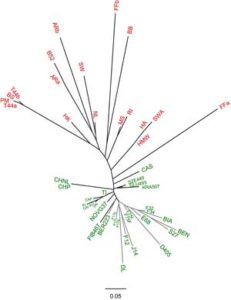
The genetic diversity in Cannabis should lead to the development of more biologically targeted strains. (From https://journals.plos.org/plosone/article?id=10.1371/journal.pone.0170522)
The outstanding genetic variety present in Cannabis with its many different strains is giving growers room to develop strains which have different effects. One review asserted “plant breeders have nearly endless opportunity to create new varieties with specific or unique qualities in response to numerous and varied market demands.”
Serious people are at work understanding the genetics of the plant. The Phylos Certified Genotype project allows anyone to determine how one Cannabis strain is genetically related to other strains.
All this means is that we are likely at beginning of understanding and getting access to the medical enhancements lurking within the Cannabis plant, and will surely see more and more strains being targeted to specific symptoms over time.
We’ll use the reports below and others to produce a list of possible strains to aid with specific symptoms in the 5th article in this series.
Phytocannabinoids
Some research suggests that the very different effects the strains can produce may be more due to the less well studied phytocannabinoids described below than to their THC/CBD contents. Some of the other phytocannabinoids found in Cannabis which might be helpful include:
Cannabichromene (CBC) – pain reliever and anti-inflammatory which blocks substance P, a neurotransmitter associated with increased pain in fibromyalgia. CBC also blocks the PPAR pain receptor and has anti-depressant effects. Try CBC-rich strains to reduce pain.
Strains: 3 Kings and Jorge’s Diamonds #1 are reported to be CBC-rich strains.
Cannabigerol (CBG) – Clonidine-like effects – CBG is a chemical precursor to both THC and CBD, antagonizes CB1 (thereby reducing the effects of THC) and is both a potent a2-adrenoceptor agonist (such as Clonidine and Tizanidine) and moderate 5HT1A receptor antagonist (such as propanolol). Animal studies suggest CBG is a potent appetite-inducer; if you’re having trouble eating, a CBG rich strain might be helpful. CBG was also helpful with inflammatory bowel disease in another animal study. Plants harvested at a certain time in the growing season contain more CBG.
Strains: Galactic Jack, Nurse Jackie, Magic Jordan, Destroyer, Mickey Kush, Allen Wrench, Blue Berries, Eldorado, Sweet Skunk and Blueberries are reported to be CBG-rich strains.
Cannabinol (CBN) – sedating sleep enhancer – a by-product of THC breakdown whose levels rise the longer a Cannabis product has been stored or exposed to oxygen, CBN has pain-reducing and anti-inflammatory properties and may – because it typically comes from aged plants with more sequiterpenoids in them – help with sleep. It either has no or very mild psychoactive effects, and is generally thought of as having sedative properties, which may be amplified, interestingly enough, when combined with THC.
Strains: One way to increase CBN levels is simply to buy high-THC pot and leave it exposed to the air for awhile. Leafly reports that “Cookie” strains tend to have high CBN levels. Other sites reports that A-Dub, Blue Blood, Strawberry Haze, Jorge’s Diamonds, Amsterdam Flame, Death Star, Cataract Kush, Kosher Kush, Pineapple Chunk, Purple Sour Diesel, Red Dragon, and Shark Shock have high CBN levels. Check out a high CBN CBD oil tincture called “Beauty Sleep“.
Cannabidiolic acid (CBDA) – anti-inflammatory and anti-nausea properties.
Cannabidivarin (CBDVA) – strong anticonvulsant properties, analgesic and anti-inflammatory, neuroprotective, anti-nausea and vomiting, bone health and bone formation, sleep-promoter, anti-anxiety, possibly anti-psychotic.
Found in very small amounts in Cannabis THCV, or tetrahydrocannabivarin, one California company is creating a THCV pill. Attempts are being made to incorporate THCV producing genes into hemp to increase availability.
Strains: Black Beauty is the one strain known to have high THCV levels.
Other Plant Compounds
Cannabis also contains a number of other compounds, some of which have health effects – including anti-inflammatory effects -different from those found in the phytocannabinoids. In fact, a complete anti-inflammatory package would probably contain both the phytocannabinoids Cannabis is best known for, plus some of the other compounds found in the plant. They include:
Terpenes – muscle relaxant, sedative, anti-inflammatory and antibiotic.
Terpenes are oils secreted by glandular hairs on the leaves of Cannabis and other plants terpenes are responsible for Cannabis’s pungent odor. Myrcene, the terpene most commonly found in Cannabis has a musky, earthy smell.
Beta-caryophyllene – anti-inflammatory, anti-oxidant, possible neuropathic pain reliever.
Beta caryophyllene’s peppery odor also shows up in cloves, pepper and cinnamon. Backes reported that “beta-caryophyllene could be poised to to become the hottest cannabinoid since CBD”. Because beta-caryophyllene activates CB2 receptors, it appears to be able to enhances CBD’s effects.
Strains – Cookies strains as well as Sherbert and Gorilla Glue.
Limonene – mood uplifter, improves mental focus, feelings of well-being, may even perk up your libido, and anti-fungal.
Limonene is also found in citrus fruit, rosemary, juniper and pine needles.
Strains: Tangerine Dream, Gelato, OG, Bubba Kush are reported to have high limonene varieties.
Beta-myrcene – calming, sedative effect, muscle relaxant and anti-inflammatory.
Backes believes that because some indica strains contain little CBD, the sedative effect derived from them is due to the myrcene terpendoid found in them.
Strains – ACDC, Godfather OG, AK-47, Purps, Grape Ape are reported to be high myrcene varieties.
Pinene – counteracts THC, may improve concentration, has some anti-inflammatory properties, and smells like, you guessed it, pine needles. Found in pine and balsmaic wood resin and some citrus fruits, pinene is nature’s most abundant terpenoid.
Strains – Pinene Kush is reportedly loaded with pinene.
Linalool – produces calming effects, reduces anxiety, sleep aid, possible immune booster. Linalool is also found in lavender.
Strains – Backes reports that high linalool strains are rare but that Bubba Kush is one.
Terpinolene – invigorating, cognitive enhancer.
Strains – Backes recommends Trainwreck, Big Sur Holy Weed, Jack Herer, S.A.G.E and Zeta.
Try Health Rising’s Fibromyalgia and Chronic Fatigue Syndrome Cannabis Review Program

you pass it on… Gary Snyder
Health Rising’s Marijuana as Medicine for ME/CFS and Fibromyalgia Series
- Pt I: Marijuana as Medicine for ME/CFS and/or Fibromyalgia: The Science Behind Cannabis – Amber Ella
- Pt. II: Getting Started with Cannabis – Amber Ella
- Pt. III: Cannabis – More Than Just THC and CBD – Cort Johnson – the other health enhancing factors in Cannabis
- Pt. IV: The Doctor Speaks: – Moskowitz on Cannabis / A focus on variety / Stopping the Treatment Burnout Blues / How to quickly stop a high / What to do when CBD stops working
- Pt V: CBD OIl – A Primer for ME/CFS and Fibromyalgia – Finding safe and effective CBD Oil and more
- Pt. V: Strain Specific – Picking Your Plants – coming up


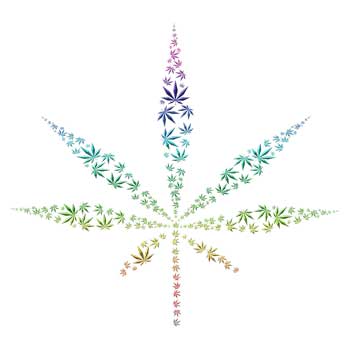

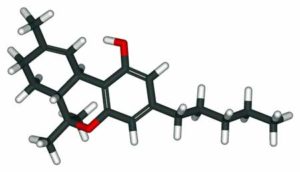
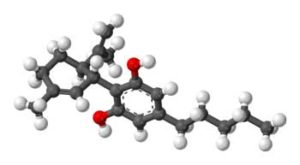
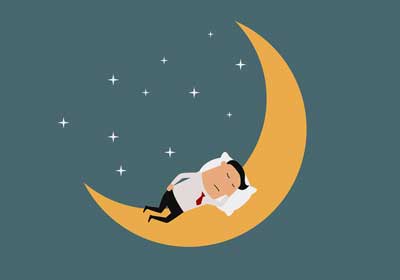





Thanks, Cort, for this particularly interesting description of the various elements of Cannabis. Very helpful.
Thanks, as someone who focused on plant ecology and botany in college, I found Cannabis to be fascinating 🙂
The link to part 3 doesn’t exist. I clicked on it several times and it says page doesn’t exist. I’m very interested in reading all the parts available.
My mistake Brandy for creating the confusion. This actually is the 3rd blog in the series.
I have always wondered if it is such a beneficial product then why the drug companies haven’t tried to be first on the mother load.
There is Nabilone but I imagine much of it has to do with the federal governments restrictions on it and difficulty doing research on it.
Guess who funds a lot of the anti-legalization efforts and efforts to open up more research on the plant? The big opioid painkiller producing drug companies.
https://www.forbes.com/sites/tomangell/2018/02/23/senator-calls-out-big-pharma-for-opposing-legal-marijuana/
There’s also the issue of economics. If millions of people are happily using their Cannabis products why would they switch to a much more expensive drug? It may not be worth the hundred million or so it takes to bring a Cannabis drug to market.
I wonder if you could do the research into which varieties could be most beneficial to me/cfs patients. I know there are many varieties, and also patients symptoms vary. But generally, what would be helpful?
No studies have been done on this. Few studies are done on Cannabis in general because of the legal situation but we will NEVER have studies on the vast number of strains available. Studies are just too expensive. We have to rely on community input.
That’s exactly we created the Cannabis Review program – so that people using Cannabis products can inform others which strains or products are working for them and how. (Of course that does require people taking the time to report on what is or isn’t working for them.)
I’m not aware of the Cannabis Review program. But I can report in that I have found CBD oil from hemp (with or without terpenes) to significantly reduce my migraine headaches. Don’t notice any help with muscle pain. But even stopped taking “Migracontrol” after I realized how helpful the CBD oil is.
This is a brand new program that we announced today. You can add your review here – https://www.healthrising.org/treating-chronic-fatigue-syndrome/drugs/cannabis-fibromyalgia/cannabis-fibromyalgia-chronic-fatigue-entry-form/
and find other reviews here – https://www.healthrising.org/treating-chronic-fatigue-syndrome/drugs/cannabis-fibromyalgia/cannabis-fibromyalgia-chronic-fatigue-reviews/
I hope you’ll contribute 🙂
Are you working on a 501C3? Thanks!
Afraid not. I created Phoenix Rising and then turned it into a 501 C3 and lost it. Then the person who took it away from me burned it to the ground and the other one has been gone for years. (They have in IMP a good board now.)
Non-profits are in the hands of Board Members and we always had trouble finding them. So back then – prior to 2013 – we had a small board and things went wrong. Looking back now almost 7 years, I don’t think my losing Phoenix Rising helped anything – on the contrary – everything got more fragmented.
If you’re interested in a large donation (>$500) and want it to be tax deductible please let me know (cortrising@gmail.com) and we do what’s called a pass-through another non-profit organization. Since their goals are aligned with ours this is an entirely legitimate operation.
The former board of Phoenix Rising that Cort refers to is long gone. The current Board of Phoenix Rising is respectful of the work Cort has done (and continues to do) and is open to collaborating with him.
Sorry I didn’t make that clear. I got lost in the past 🙂 I fully support the current Board of Phoenix Rising.
Fantastic article. I worked with an anaesthetist in the uk 30 yrs ago who advocated cannabis for pre med and post op pain! He had to fund his own research! He was obviously ahead of his time. I now have severe fibromyalgia and 6 disc problems, degenerative spine and neuropathic pain. Cannabis helps me function. It’s the only med that stops the neuro pain & spine pain. Different strains seem better for the fibro. But as doctors do not prescribe in the uk due to NO gov ‘N.I.C.E’ guidelines! So I have to take what I can from the streets like a common criminal. The thing is that cannabis lets me walk, I’m not is a wheelchair anymore- my health has to take priority! Thanks for a comprehensive article 10/10*
Thanks! The review program is designed to highlight the best strains; if you know the strain you’re using please add your review to the program – https://www.healthrising.org/treating-chronic-fatigue-syndrome/drugs/cannabis-fibromyalgia/cannabis-fibromyalgia-chronic-fatigue-entry-form/. Otherwise thanks for providing your experience and good luck with changing those not so NICE guidelines.
In particular, I want to tell you that against my burning pain I had an incredibly good effect from CBD. That’s precisely because CBD turns on TRPV1. For some years now, I have been in contact with a Swedish researcher who has researched pain and CBD. I came in contact with him after thousands of hours of studying on the internet about burning pain. I have also been assisted by one of Sweden’s foremost neurologist. I handed over to this doctor some alternative treatments, which he thought one of them was best.
The doctor sent a referral for a pain treatment through a so-called pain patch, called Qutenza. Qutenza is an extremely strong chilli extract, of as much as 8% which a nurse may put on my soles of my feet where I have the burning pain. Qutenza also activates the TRPV1 recipes to the extent that one can almost express it as burning the nerves. Thus, the nerves “creep up” and no longer have contact with the skin. This treatment I receive was about every 6 months. The first week after the treatment makes it very painful, but I have taught myself how to take care of that pain. I can either take Lyrica + CBD oil or Tramadol + CBD oil.
There is already a CBD drug approved today – Epidiolex. It is currently being approved as a drug in Europe by EMA. In Europe, the drug is called Epidylolex. So I have two very effective treatments for my burning pain. One is CBD, which I believe has the greatest effect with the activation of the receptors TRPV1 but also serotonin. Furthermore, it is Qutenza that makes me avoid taking other drugs such as Cymbalta or Lyrica more than the first two weeks.
It took me about 6000 hours to read these things. I spent half my soul and time for several years. I have had contact with researchers, chief physicians / neurologoc Sweden’s leading dermatologist who is now retired. So the above is not taken out of the air but it can help those who have burning pain tremendously. Thank you for the word and apologize for my poor English. I use google translate. 🙂
Actually very good English Dan! Everything came across clearly. Thanks for all the information and please consider adding the CBD oil review. We are going to add a drug and patch option as well – thanks for the idea 🙂
https://www.healthrising.org/treating-chronic-fatigue-syndrome/drugs/cannabis-fibromyalgia/cannabis-fibromyalgia-chronic-fatigue-entry-form/
It’s good to hear that CBD helps with burning pain – a common neuropathic pain symptom- which I tend to get after too much activity.
https://www.reuters.com/article/us-gw-pharma-epidiolex-ema/european-panel-okays-gw-pharma-cannabis-drug-for-epilepsy-idUSKCN1UL1GI
https://www.europeanpharmaceuticalreview.com/news/95506/marijuana-based-treatment-approval-ema/
Hi Cortand Dan, I immediatly looked for it because I live in Belgium, severelly bedridden, etc
Epidiolex seems to have approval here for é kind of seisures, epilepsie and I could not find any other condition.
maybe if you are lucky to be well enough to find a specialist who will off label prescribe it for pain (cfs or FM) you can get it in some country in europe but many homephysisians on wich I had or have to rely on because I am so ill, will never prescribe it for me. They even treat me not symptom wise like cdc or nih says.
sorry for the bad news.
I have many pains, burning pain as well every day.
Thanks for posting the first review Dan! 🙂
I get more burning pain in the soles of my feet when I strain them hard or for a longer period of time. If I do not strain the soles of the feet, I do not have much pain at all. However, I get pain relief at high stress. Thus, it is among other things in mechanical stimulation that the receptors TRPV1 are turned on.
About the different TRP receptors where TRPV1 and TRPA seem to be the most interesting in terms of pain, according to the researcher I know.
https://en.wikipedia.org/wiki/Discovery_and_development_of_TRPV1_antagonists
Hi Konjin. I saw what you wrote first now. Epidyolex is not really clearly approved yet by EMA, but it will be fully approved shortly. According to the regulations, a positive decision by EMA should normally take 67 days before it is ready for sale. This information found my neurologist on the EMA’s website. I have a neurologist who is one of Sweden’s foremost and I know his wife privately when she is my colleague, which is why I get this very good help. I and the neurologist, along with many others, sincerely hope that Epidyolex will be able to be prescribed off-label. The neurologist said that there is a small risk that it can only be prescribed by pediatric neurologists, but we will see what EMA decides on.
There are more medications that help with burning pain, but as always with medications it is different how we react but also what the causes of the burning pain are. Me and my other friend the researcher would like to think that it is TRPV1 that gives the burning pain, that is it is a bow in the drama but this is so incredibly complex that the dermatologist who also examined me said that it is about hundreds of different substances in the body that is in imbalance. Many researchers usually express it as a symphony played by an orchestra. If a fault is played, the whole sound will be wrong.
I believe that in the future you may be able to reverse the pain, but how long it takes depends on so many different factors, especially how much money is spent on research. Perhaps most important of all is that you do research in depth but also in depth.
The medicines that have worked for me against the burning pain are Lyrica and Cymbalta. Lyrica, however, made everything too slow in my brain. Cymbalta was really good and helped about 50 percent. I am normally a very good responder for medicines. My theory for how I got my pain is that it is from PTSD and other long-term mental and physical stress. Stress triggers my pain. However, I quit Cymbalta because I found CBD and that Cymbaltan gave me sexual side effects and that I felt flabbergasted.
Excellent informative article!
I would love to see a ME/CFS review of cannabis, but to get novices going, there already exists http://www.leafly.com which reviews strains–although not as targeted as I would like for our condition.
I was surprised when I entered Medicare that both Sutter and Stanford recommended I try medical marijuana for pain. Previously Kaiser, on the other hand, sided with the U.S. government and said if testing showed cannabis use, patients were denied any kind of opioid.
Having lived in the vicinity of the Haight-Ashbury, I have had plenty of experience in the wild west of cannabis, although plant culture has certainly been refined since then! Unfortunately, I still get unpleasant side effects with various daytime strains, but for sleep, nothing could be better. Hopefully they will refine this magical plant’s powers to the point where that will be possible too!
And how is your ‘mind over pain’ training going, Cort?
Leafly is a great resource. I’ll get into that in future blogs but suffice to say I was really surprised to see much work has gone into websites like Leafly. That, in itself, is encouraging.
My hope is that once the feds take the heat off Kaiser and others will follow. My guess is that lots of doctors – particularly pain and sleep docs – would love to have another option and if the right studies are done they will.
Mind over pain training is actually going quite well. I have 40 years of chronic illness issues to deal with – so it’s going to take quite some time but I’m very pleased at the results so far and feel optimistic about the future. The first win – my feet started to come alive…They’ve been like lumps of inert matter for years. 🙂 Hopefully over time that will spread. I think it will.
Cort, there was no Reply box to reply to Dan or konijn’s messages, so I’m using this one. The CBD oil I’m using, I’m using at the suggestion of my vitamin specialist then confirmed by my neurologist as helping reduce juvenile epilectic seizures and since there seems to be a link between epilectic seizures and migraines, they both thought it was worth a try. It most definitely was.
Interestingly, I subsequently tried medical marijuana which I hoped would help with all the other pain, but it did not, and was incredibly expensive.
I have friends who have tried medical marijuana for other conditions (extreme and continuing pain for years after back surgery) and just ended up feeling dizzy with no pain relief.
I and most of my friends are not very well acquainted with ‘real’ marijuana, since it’s not possible to obtain it in my state. But one of my doctors suggested that it would be much more useful than any of the pharmaceutical “translations” of it. For that, one needs more street smarts than I have.
Interesting that CBD oil worked while medical marijuana did not but congrats on finding something. Different strains can have very different effects. I hope that you’ll pass your experience on in our new review program – https://www.healthrising.org/treating-chronic-fatigue-syndrome/drugs/cannabis-fibromyalgia/cannabis-fibromyalgia-chronic-fatigue-entry-form/
I need suggestions about a cbd oil for sleep. Green revolution only sells sleep beauty in Wa. and Ca. It would need to be high in CBN. Which ones ship over state lines?
Hopefully someone will provide an idea but if they don’t – hang in there – we have two more blogs coming up. 🙂
Someone suggested, for sleep, California Poppy Oil, which I easily found at my vitamin store. However, it is related to opiate. I’m still considering it, but am a little shy of the opiate aspect.
CBD didn’t seem to do anything for me and cannabis (both indica and sativa strains) have made my pain worse. They increase sensation, so any pressure= pain. I sure wish they did help, because I live where they are legal and opioids which do help me are next to impossible to get from a provider.
For those of you trying cannabis products for the first time. I have smoked cannabis for 47 years. I use a water pipe. Smoking means the effects happen pretty fast and I can gauge how I feel. Edibles, tinctures, etc. can take time to work and I had a bad experience trying a CBD/THC combination spray tincture. Only three sprays and I became more and more uncomfortable, the higher I got. Remembered reading about black pepper and ran to the kitchen and ground some black pepper into my hand and ate it. This resolved the issue almost immediately. In California I usually see THC in cannabis products sold for sleep purposes. If you do not want to take a THC product, I recommend trying the amino acid – L-theanine. So effective in my case that I wait until I am ready to sleep soon before taking it. 100 mg. Mugwort also works for me for sleep and anxiety.
The next blog will go over ways for people who’ve had bad experiences in the past to use it safely. I hadn’t heard of black pepper though 🙂
Interestingly, CBD counteracts THC which is responsible for the anxiety issues. Thanks for the tips on other other sleep aids
Just a small warning.
I am close to someone who researched the use of marijuana and the strains etc. For help with ME, anxiety and depression. Found it helped immeasurably… at first… then a difficult life situation caused him to use more and more… which led to paranoia, isolation and eventually a psychotic break. ( used large amounts all day for extended period). He believed no harm could come of the use of it.
Emerg dr said she has seen a huge increase in psychosis due to heavy pot use.
There was a difficult withdrawal period.
I Understand that many many people use with no side effects.
My message is simply to Use with moderation and care.
Good advice! I stopped using marijuana decades ago precisely because it made me anxious and paranoid.
The treatment section is going to focus heavily on using marijuana products which avoid the problems with paranoia – and it’s going to describe a way to stop those issues should they occur.
This is where I first learned of cannabinoids other than THC, CBD. I’ve found THCA (Tetrahydrocannabinolic Acid) more helpful than THC, CBD for my dysautonomia and POTS. Cannabinoid acids are precursor molecules to THC and CBD found in raw or unheated forms of cannabis. They do not produce psychoactive effects in the raw, unheated form.
This informative link is one page, easy to understand & follow. It helped open my eyes to additional cannabinoids that provide greater relief for me.
A Summary Comparison of THC, THCA, and CBD
http://www.cbdscience.com/uploads/1/3/9/3/13931495/thc_thca_cbd_comparrison_summary.pdf
This observational study provides information on the patterns of cannabis use for therapeutic purposes among a group of patients with FM. Most of them were middle-aged women that did not respond to current treatment and self-administered marijuana, devoid of medical advice. Patients referred cannabis use in order to alleviate pain as well as other manifestations of FM. Significant relief of pain, stiffness, relaxation, somnolence and perception of well-being, evaluated by VAS before and 2 hours after cannabis self-administration was observed.
Great, we have not begun to uncover the health benefits of CBD and THC. It is going to grow and the advancements will be amazing. A safer natural altertive to healing a plethora of illness. Excited to see how this industry grows.
To learn more about marijuana as medicine please check out the worlds leading online cannabis college.
http://www.cannabistraininguniversity.com
I find myself very nervous when it comes to doing difficult things & fast work & sometimes my hands vibrate. I don’t understand why it happened to me & I blamed my instability for it. However, according to your information, I think I should take GABA. But before taking GABA, I must show a good doctor.